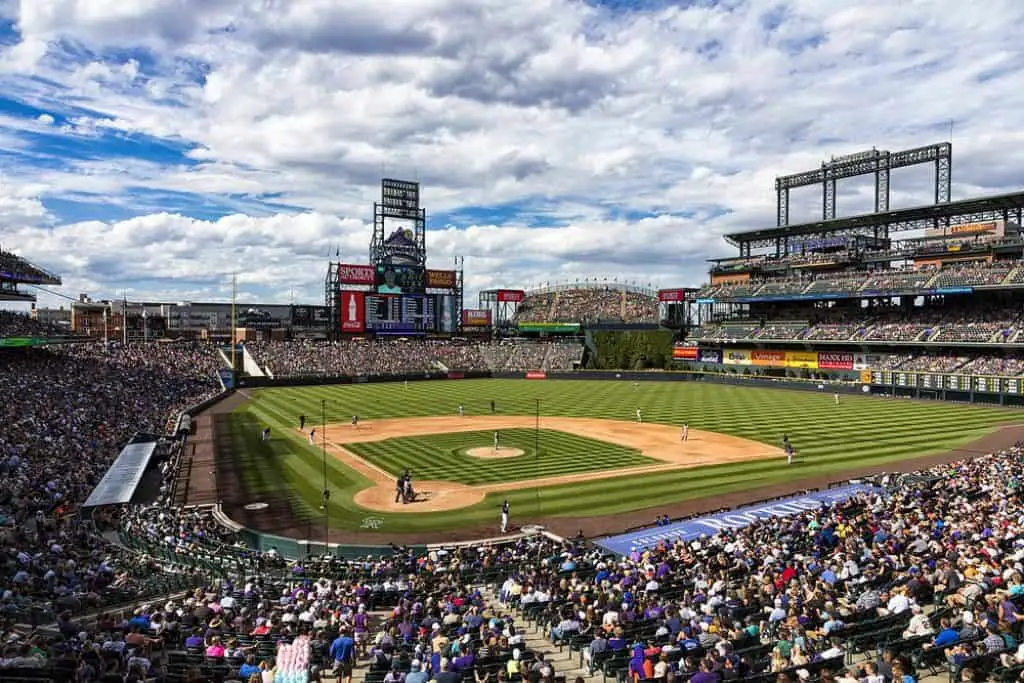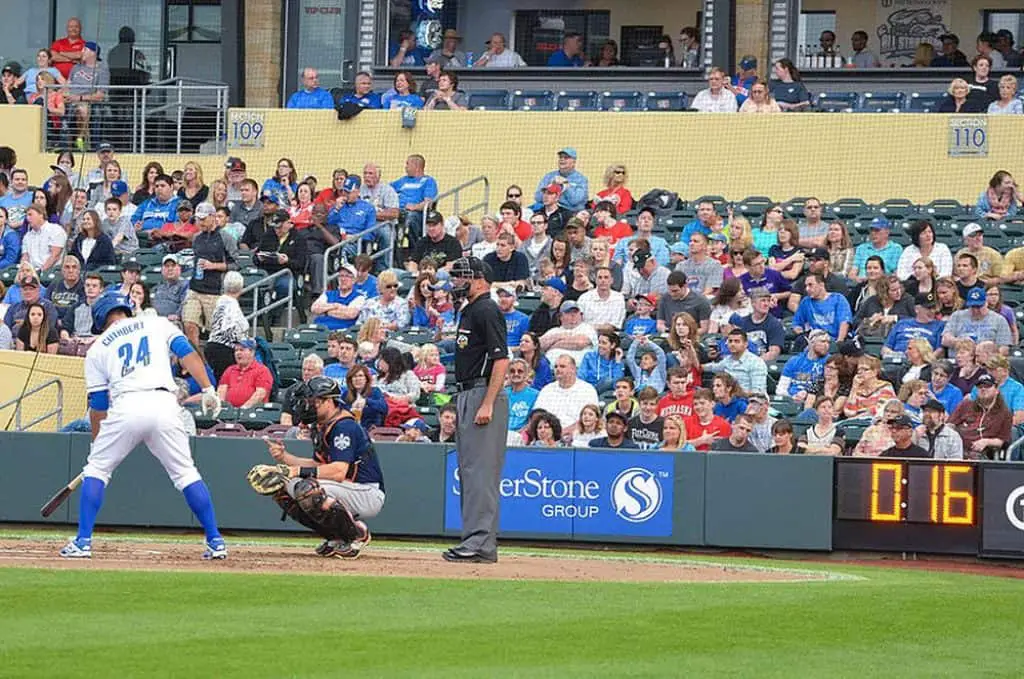Do you ever wonder why baseball games seem to go on and on? Unlike other sports, baseball doesn’t have a clock ticking down the minutes. Instead, the length of a baseball game is determined by the number of innings. But how long is an inning in baseball exactly? Well, my sport-loving besties, let’s dive into the details and find out!
The Length of an Inning in Baseball

An inning in a baseball game can vary in length. Typically, an inning lasts until each team gets three outs or a total of six outs. The only exception is the ninth inning. If the home team has the lead after the top half of the inning, the bottom half is not played, making those innings twice as short. This rule applies to all levels of the game, except Tee Ball, where outs are not counted and every player on a team gets a chance to bat in each inning.
So, the length of an inning mainly depends on the performance of the pitchers, batters, and fielders. The quicker the pitchers can get the outs, the shorter the inning will last. On the other hand, great performance from the batters can extend the duration of the inning.
What is the Average Duration of an Inning in Baseball?
Determining the exact length of an inning in baseball is not easy, as it depends on various factors and player performances. Unfortunately, MLB games don’t have an official clock to measure the length of innings. However, based on the average duration of MLB games, we can estimate that an inning lasts a bit over 20 minutes on average.
In the 2021 regular season, the average length of an MLB game was 3 hours, 10 minutes, and 7 seconds. Dividing this by nine, we get an approximate duration of about 21.1 minutes for each inning. Of course, this method doesn’t account for breaks in play, pauses between innings, or pitching changes.
How Many Minutes can a Single Inning Take?
When a pitcher is in top form and there are no hits, a half-inning can be completed in just 3-5 minutes. Even if both pitchers perform exceptionally well, a full inning shouldn’t take more than 10-15 minutes. However, if a pitcher struggles with control and walks many hitters, a half-inning can easily reach 30 minutes.
Recently, MLB games have been getting longer on average. To address this issue, the league has implemented rule changes to speed up games. Umpires now have more authority and freedom to penalize players who waste too much time between pitches. They can even call a ball or a strike before the pitch is thrown.
Parts of an Inning in Baseball

Photo by Minda Haas (CC BY 2.0)
An inning consists of two parts, known as half-innings. The first half is called the top of the inning, while the second half is the bottom. In each half-inning, one team fields, while the other bats. After each half-inning, the roles are switched.
The visiting team always bats first during the top of the inning, giving the home team the advantage of having the last chance to score. If a game is played on neutral ground, the home team is determined by mutual agreement. If the home team is leading after the top of the ninth inning, the bottom is not played as the winner is already decided.
Between each half-inning, there’s a transition period called the middle of the inning. During this time, players can quickly return to the dugout and get their gear.
What Ends an Inning in Baseball?
A half-inning is finished when the fielding team gets three hitters (or runners) out. When both teams have taken their turns at bat and gotten three outs, the whole inning comes to an end. There are several ways for the fielding team to get a hitter out:
- Field Out: This happens when a fielder catches the ball batted by the hitter before it bounces off the ground. The fielder doesn’t necessarily have to catch the ball in fair territory.
- Put Out: Fielders can put out the opposing team’s runner by tagging them while they’re not on the base.
- Strike Out: This occurs when the pitcher throws the ball in the “strike zone” or tricks the hitter into swinging and missing. The pitcher needs three strikes to strike a hitter out. Foul balls also count as strikes.
How Long Does the Break Time Between Innings Last?
Amid complaints about the length of games, MLB has been making efforts to shorten them. One aspect they’ve modified is the break time between innings. Since 2015, MLB games have featured a timer to measure the period between innings and pitching changes.
In 2016, the league reduced the break time to 2 minutes and 5 seconds for local broadcasts and 2 minutes and 25 seconds for nationally televised games. This was a 20-second decrease compared to the previous break time. In 2019, it was further shortened to 2 minutes for both local and national broadcasts. However, tiebreakers or playoff games still have a separate time of 2 minutes and 55 seconds.
The break time starts ticking when the final out of an inning is recorded.
The Longest Inning Ever Played
The longest recorded inning in modern baseball lasted for a staggering 1 hour and 8 minutes. It took place in Arlington, Texas, on May 8, 2004, during a game between the Detroit Tigers and the Texas Rangers. The matchup eventually ended after ten innings, with the Rangers winning 16-15. The longest inning was the fifth one.
During the top of the inning, the Tigers faced 54 pitches while recording 8 runs. The bottom half of the inning took a similarly long time, with the Rangers facing 56 pitches and scoring 10 runs. In total, there were 110 pitches and 18 runs during this epic inning, making it the longest in MLB history.
In Conclusion
If you’ve ever attended a baseball game or watched it on TV, you know that it can be quite a lengthy affair. With each inning lasting around 20 minutes, you need to set aside at least three hours to witness the whole ballgame. Of course, how long an inning lasts in baseball depends on various circumstances.
Getting an out is no easy task, and a team with a strong batting lineup can drag the inning out for more than half an hour. On the other hand, a pitcher in great form can significantly shorten the length of the entire game. While longer innings may offer more excitement with increased offense, most people aren’t prepared to dedicate that much time to a single baseball game.
MLB has made efforts to speed up the game, but there’s still a tendency for games to get longer. So, my fellow sports enthusiasts, next time you settle in to watch a baseball game, remember to stock up on snacks and maybe take a nap during those long commercial breaks. It’s all part of the baseball experience!
For more exciting sports news, head over to Sports News!